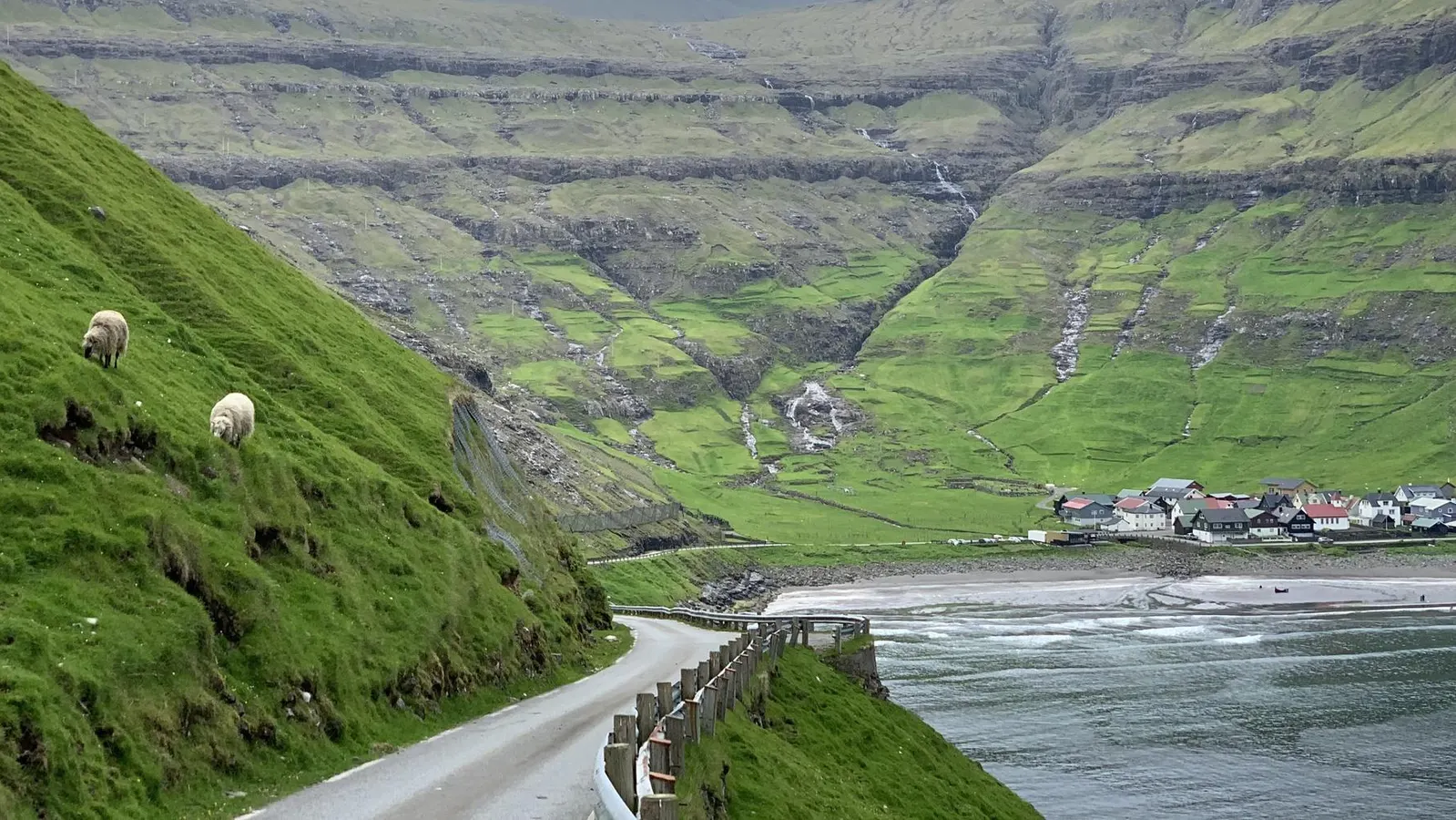By Brad Japhe Jonathan Nackstrand Senior Contributor
Hitting the road in one of the world’s most starkly beautiful destinations.
Everyone loves a nice break from the job. But there’s a good bit of actual work that goes into organizing one. Many travelers get granular, spending countless hours micromanaging each and every detail of an upcoming getaway. Only afterwards do they realize that the best moments of any vacation happen when you’re busy making other plans. Embracing this sort of serendipity, a growing number of adventurers are opting to surrender to the flow. They even have their own trendy nickname: “surrender seekers.” And now one of the world’s most whimsical travel destinations is introducing a program catered exclusively to them.
Beginning today, the Faroe Islands launches Auto Odyssey: a series of self-navigating itineraries, curated from the perspective of a local. A total of 30 full-day road trips will carry intrepid travelers into some of the most remote corners of the rugged, North Atlantic Archipelago. None of the details will be revealed prior to arrival. Here’s how it works…
Upon landing at Vágar Airport (the only airport in the self-governing Danish territory), visitors can hire a vehicle with 62N car rental and then scan a provided QR code to activate their own set of stops throughout the day. Each bespoke itinerary will contain up to six local landmarks in total, taking up to 6 hours to leisurely complete. But in deference to the surrender seeker, only one section of the trip will be shared at a time. During the journey, local lore is revealed, tethered to the specific terrain being traversed.
No travelers ever receive the same itinerary as anyone else on the road at the same time. This ensures that each experience feels personal and intimate. But it also reveals a secondary purpose to the programming: alleviating the herd mentality that characterizes tourism in the Instagram age.
MORE FOR YOU
“Across the globe, tourists gather around the same iconic ‘hot spots’, driven by algorithms and social media that create a closed ecosystem where images from popular places attract even more people to those very locations,” says Guðrið Højgaard, CEO of the islands’ official tourism board, Visit Faroe Islands. “The result is over-tourism. And predictable experiences. We have experienced increasing pressure on selected sites themselves, and now we are trying to reverse the flow–quite literally.”
Mystical beauty around every turn of the road in the Faroe Islands.
On account of its relative remoteness–sat between Scotland 200 miles to the south and Iceland 400 miles to the north–the Faroe Islands hasn’t had to worry about over-tourism too much. Indeed, it’s rightfully considered one of Europe’s hidden gems, welcoming approximately 130,000 visitors annually. Still this is a landscape with only 54,000 locals. And so when tourists converge en masse to snap roadside pics of iconic sights like Mulafossur Waterfall, or Sørvágsvatn–“the lake above the ocean,” it can cause strain on local infrastructure.
But the thing about this place is that there is near-mystical aura of beauty everywhere you look. These new curated trips shift focus to under-appreciated destinations that are no less majestic than the stuff you might have already gawked at on social media. There are small villages of turf-roofed cabins tucked within fjords. Or a visit to Viðareiði Church, built from stones gathered along the northern coast, boasting unobstructed views of Europe’s tallest sea cliffs.
The Fugloy Island is pictured from the Vidoy Island, on October 10, 2021, near Vidareidi village in … More the Faroe Islands. – The Faroe Islands are known for its fishing and sheep farming as the main industries. (Photo by Jonathan NACKSTRAND / AFP) (Photo by JONATHAN NACKSTRAND/AFP via Getty Images)
AFP via Getty Images
“These routes are shaped by the people who live here, offering a more authentic perspective,” according to Marta Káradóttir, a project manager for the initiative with Visit Faroe Islands. “We’re really just asking travelers to let go of control for a moment. When you don’t know what’s around the next corner, you open yourself up to something completely different. Maybe something more beautiful. Maybe just more real.”
And, naturally, there’s really good food and beverage to appreciate along the way. From roadside fish and chip stands, showcasing the vibrance of the local seafood scene, to a stop in Vestmanna to tour the island’s first dedicated whisky distillery, Faer Isles. Maybe a flight of colorful creations from Mikkeller bar in downtown Tórshavn–the territory’s boisterous capital “city.” No matter how it all unfolds, surrender seekers will surely surprise their taste buds with many a culinary delight.
“This is a more thoughtful kind of journey, designed to both protect what’s most beloved and reveal spots often overlooked,” adds Højgaard, hopeful that it can inspire other tourism boards to follow suit. “With this initiative, we hope to lead by example, demonstrating how destinations can use innovation to spread tourism more responsibly and meaningfully.”
Flights to the Faroe Islands from New York average around $750 round trip, with layovers in either Reykjavik or Copenhagen.
A flight of colorful microbrews from Mikkeller Tórshavn, a craft beer bar in the territory’s … More capital.
Editorial StandardsReprints & Permissions
